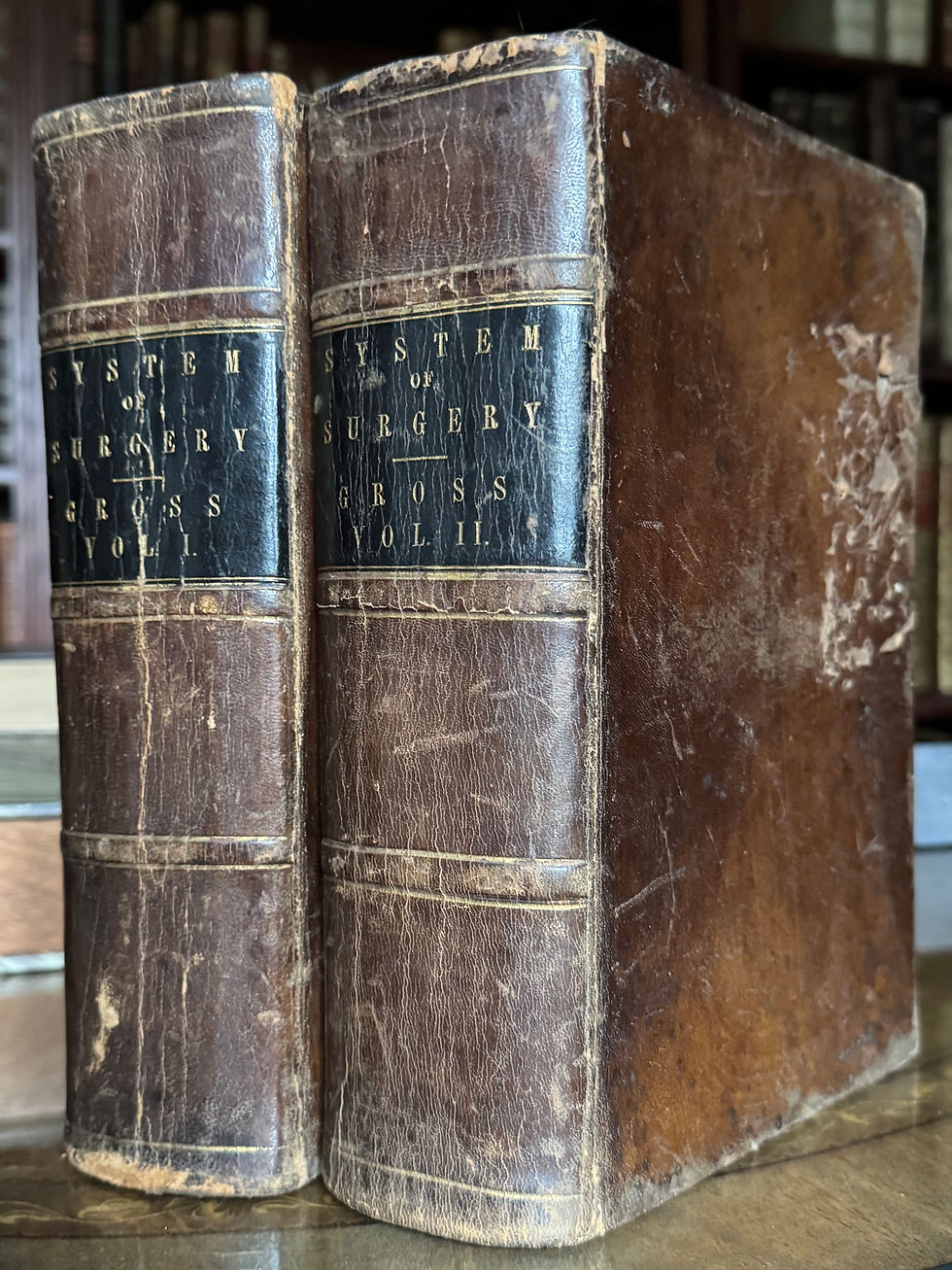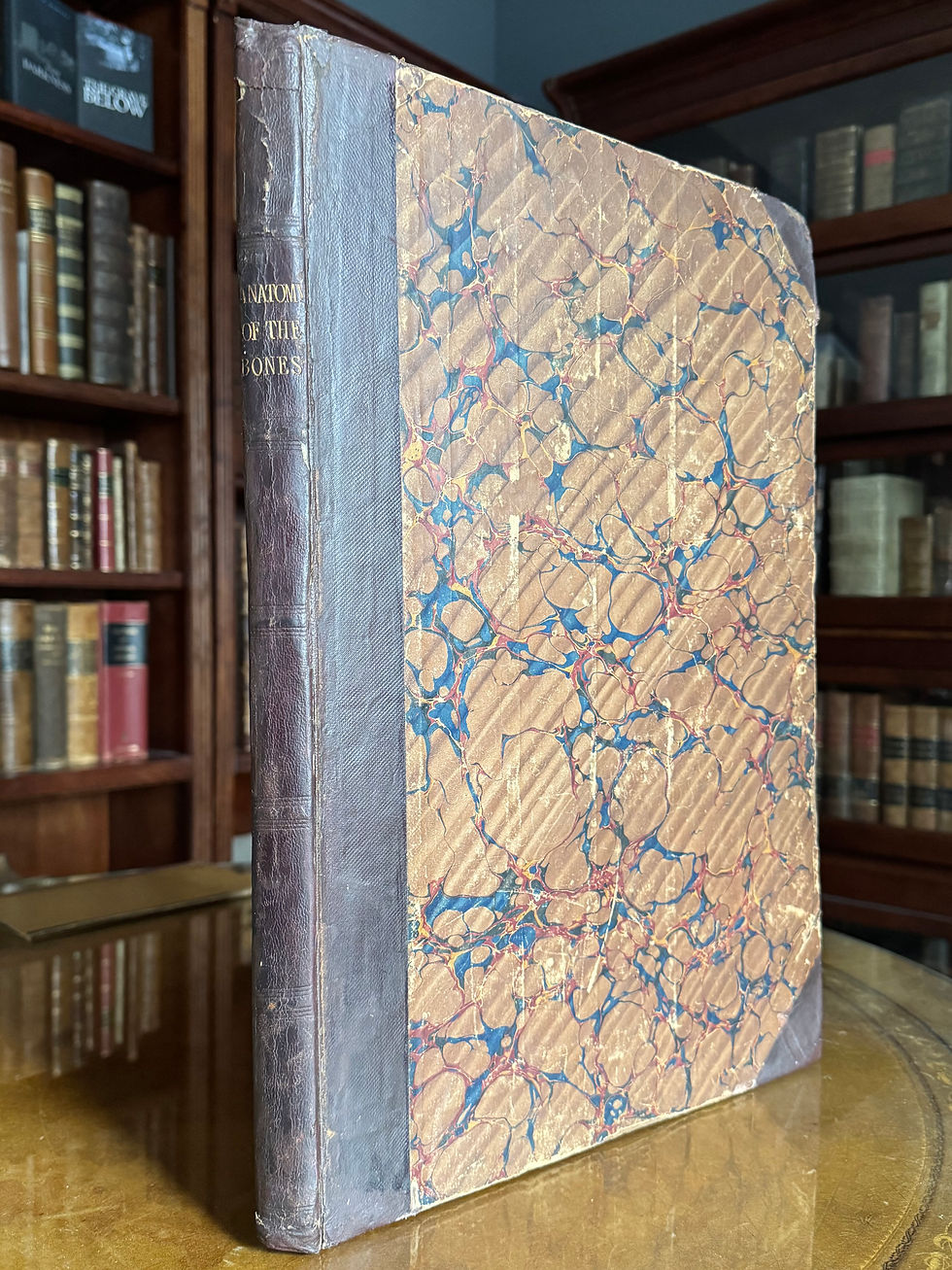Cananum, Musculorum Humani, 1962 Facsimile
Musculorum Humani Corporis Picturata Dissectio per Ioannem Baptistam Cananum. Ferrariae, 1541 (?)
Illustrated Dissection of the Muscles of the Human Body, by Giovan Battista Canano – Ferrar, 1941 (?). Fac-simile Edition with biografical, historical and critical introduction, and Italian and English translations by Giulio Muratori. Professor of Anatomy – Director of the Department of Anatomy of the University of Ferrar (Italy). 1962.
Soft cover (in onion skin, which has a few small marginal tears) with text on cover and spine. Set in two bilingual columns (Italian and English). Margins ample but with mild toning. Otherwise, clean, bright, and tight throughout. A very good copy.
Blank (i/ii) – vi, 1 – 109, colophon. Facsimile leaves pgs 33 – 73 in Latin with anatomic figures. Facsimile of 1555 letter on pg 16.
Measures: 9 5/8 x 6 7/8 x ¼ inches.
See G-M 373: “Contains copper-plates of the bones and muscles of the upper limb, from drawings by Girolamo da Carpi, which “in realism and exactitude surpassed anything between Leonard and Vesalius; but having seen the woodcuts of [Vesalius’s] Fabrica, the high-minded Ferrarese deliberately suppressed his own book, and only 11 copes are now extant (C. C. Klebs). The first book in which each muscle was illustrated separately. This fine work was reprinted in facsimile in Florence, 1925, edited by Harvey Cushing and E. C. Streeter. English translation in No. 461.3 (Lind, Levi Robet. Studies in pre-Vesalian anatomy. 1975).
Heirs of Hippocrates 187: “A native of Ferrara, Canani came from a distinguished medical family and developed into an anatomist at an early age. He was trained by Marcantonio della Torre, an associate of Leonardo da Vinci.... He discovered the palmaris brevis muscle in the hand and was the first to describe the valves in the veins, a fact which he communicated to his contemporary, Vesalius. In 1541 he published a small volume of twenty leaves on the muscles of the arm and forearm. This was to be the initial book of a seven-book series on the musculature of the bones that he planned to produce; however, it was the only book that was competed.... As far as we know today, his illustrations are the first copperplate engravings to be used in medical illustration. … Canani’s technique of picturing each muscle separately and showing its relationship to the bones was a new and unique approach to teaching anatomy. … This facsimile was made form Dr. Harvey Cushing’s copy.”
















